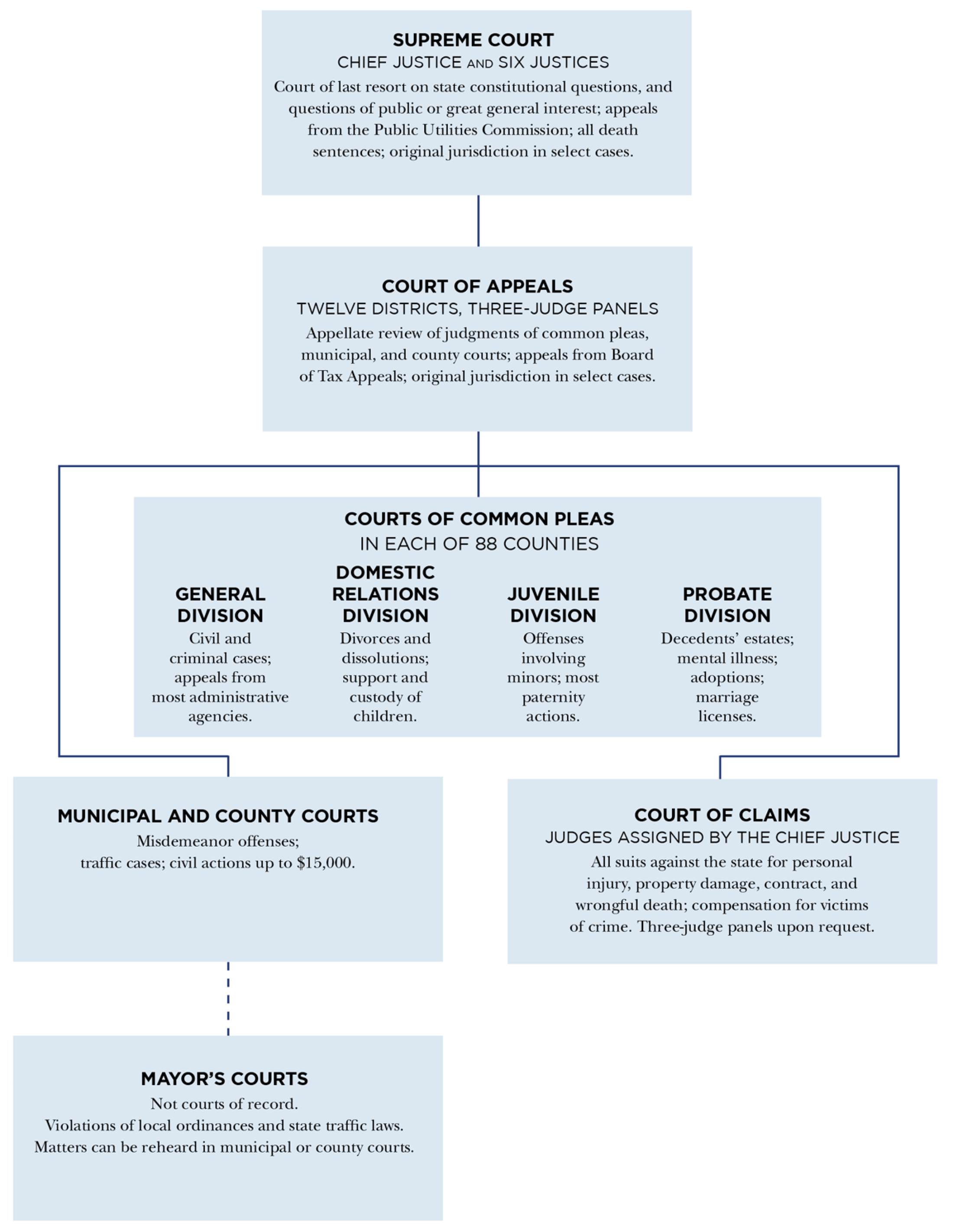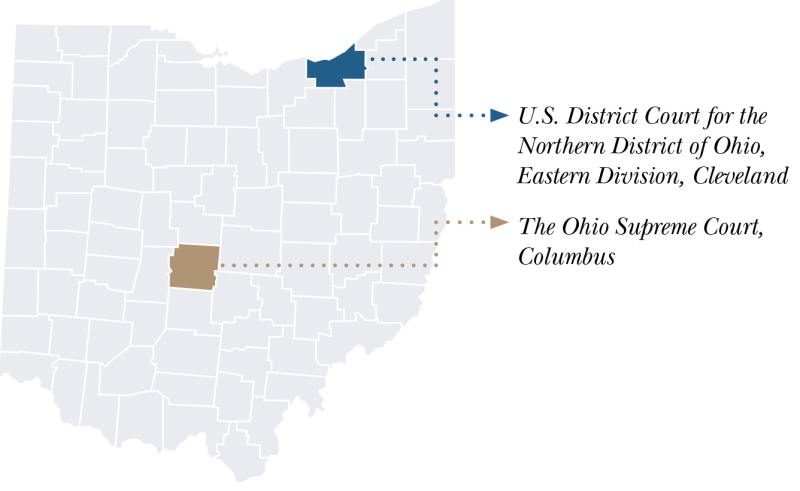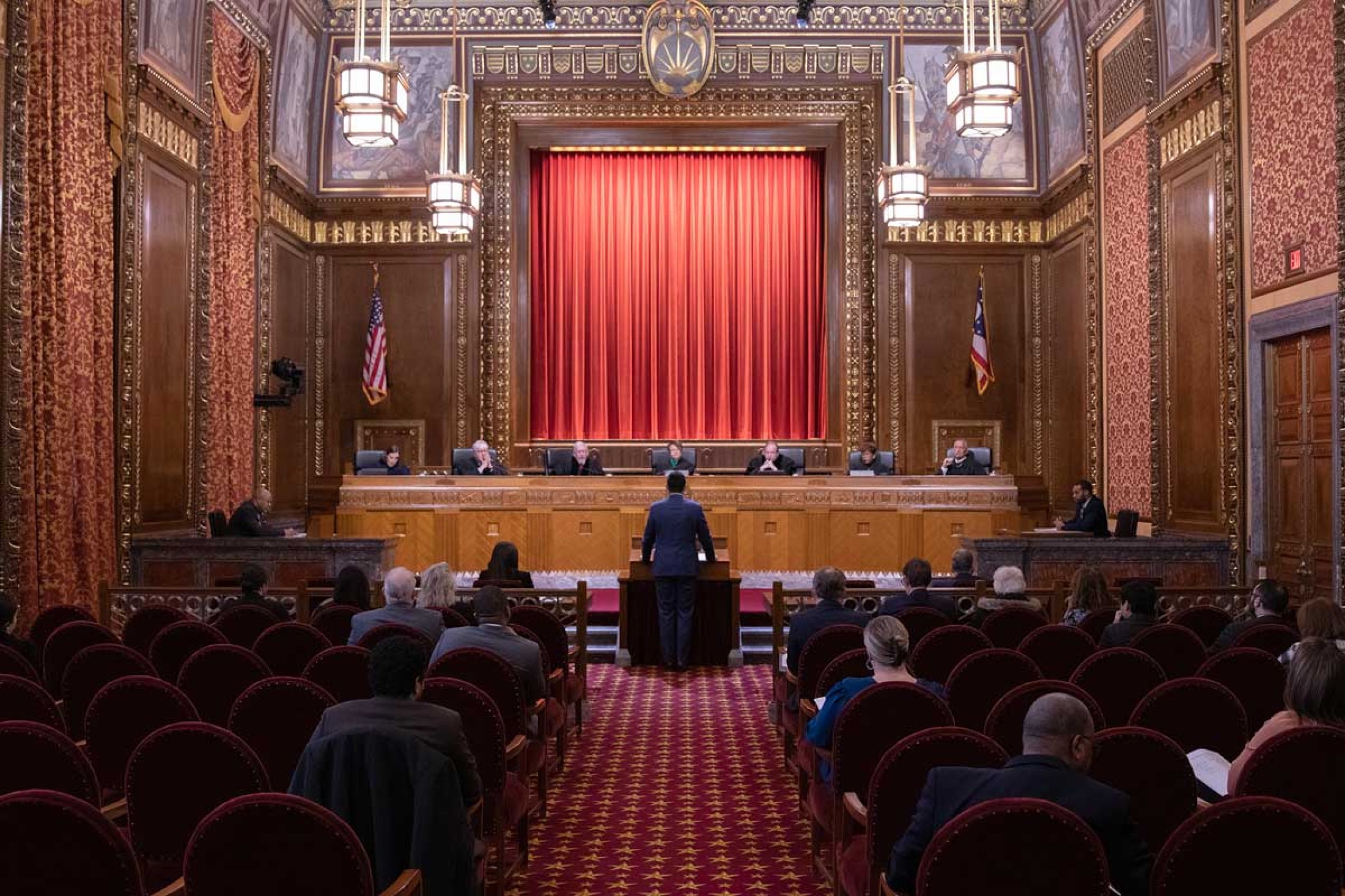Rebecca Buddenberg v. Robert K. Weisdack


OHIO'S COURT SYSTEM

Wood County Courthouse, Bowling Green, Ohio

COURTS OF COMMON PLEAS
IN EACH OF 88 COUNTIES
General Division:
Civil and criminal cases; appeals from most administrative agencies.
Domestic Relations Division:
Divorces and dissolutions; support and custody of children.
Juvenile Division:
Offenses involving minors; most paternity actions.
Probate Division:
Decedents' estates; mental illness; adoptions; marriage licenses.
Background
Buddenberg Resigns from Position with Geauga County Board of Health
- In April 2016, Rebecca Buddenberg was hired as the fiscal coordinator for the Geauga County Board of Health. A few months later, she reported unequal pay practices and potential ethical violations by county health commissioner Robert K. Weisdack.
- Among her allegations were that a male employee was paid a higher salary than a female employee of the same position and that Weisdack had awarded himself a nobid contract without the required county auditor’s approval.
Buddenberg Files Federal Lawsuit against County Health Commissioner and Others

Carl B. Stokes U.S. Courthouse, Cleveland
Certified Questions for the Ohio Supreme Court
The Ohio Supreme Court accepts the case.
- A federal district court is allowed to send or “certify” a question of state law directly to a state supreme court. Unlike a case filed in a state trial court, this case does not have to go or proceed through the same appeals process via a district court of appeals.
- Four of the seven justices on the Ohio Supreme Court must vote in favor of accepting the case.
- The Supreme Court agrees to answer the two questions.


The Ohio Statehouse, Columbus
Two Ohio statutes are relevant to this case:
R.C. 2921.03(C) | Intimidation
- A person who violates this section is liable in a civil action to any person harmed by the violation for injury, death, or loss to person or property incurred as a result of the commission of the offense and for reasonable attorney's fees, court costs, and other expenses incurred as a result of prosecuting the civil action commenced under this division. A civil action under this division is not the exclusive remedy of a person who incurs injury, death, or loss to person or property as a result of a violation of this section.
Weisdack's Arguments
Civil Lawsuit Claim Requires Conviction
- Black’s Law Dictionary defines “criminal act” as an “unlawful act that subjects the actor to prosecution under criminal law.” By this definition, the “criminal act” is an act that is unlawful and prosecuted.
- For an act to be “criminal,” a crime must be committed, and for a crime to be committed, there must be a conviction.
- R.C. 2921.03(C) also doesn’t define “commission of the offense.” The only way to have a criminal violation and a committed offense is through a conviction.
Buddenberg's Arguments
Conviction Not Required for Civil Lawsuit
- In response to Weisdack’s interpretation of Black’s Law Dictionary definition of “criminal act,” Buddenberg argues that “subject to” prosecution is not the same as “has been prosecuted.” Instead, it means that a person could be prosecuted for an unlawful act.
- R.C. 2921.03(C) does not require a conviction to file a civil lawsuit. The term “commission of offense” is not the same as “conviction.”
- Ohio School Boards Association
- Ohio Transit Risk Pool
- County Commissioners Association of Ohio
- The Ohio Association of Civil Trial Attorneys filed a separate brief.
The following groups filed a joint brief supporting Buddenberg's position:
- Ohio Crime Victim Justice Center
- Ohio Alliance to End Sexual Violence
- Cleveland Rape Crisis Center
- Ohio NOW Education and Legal Fund




